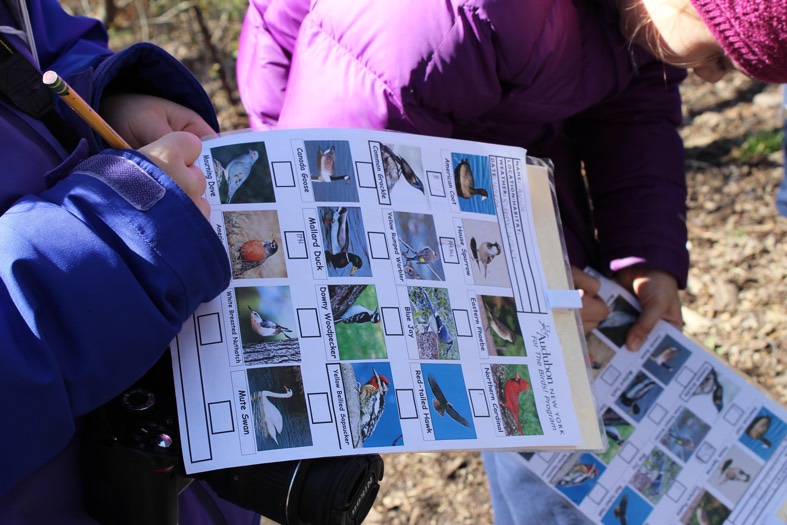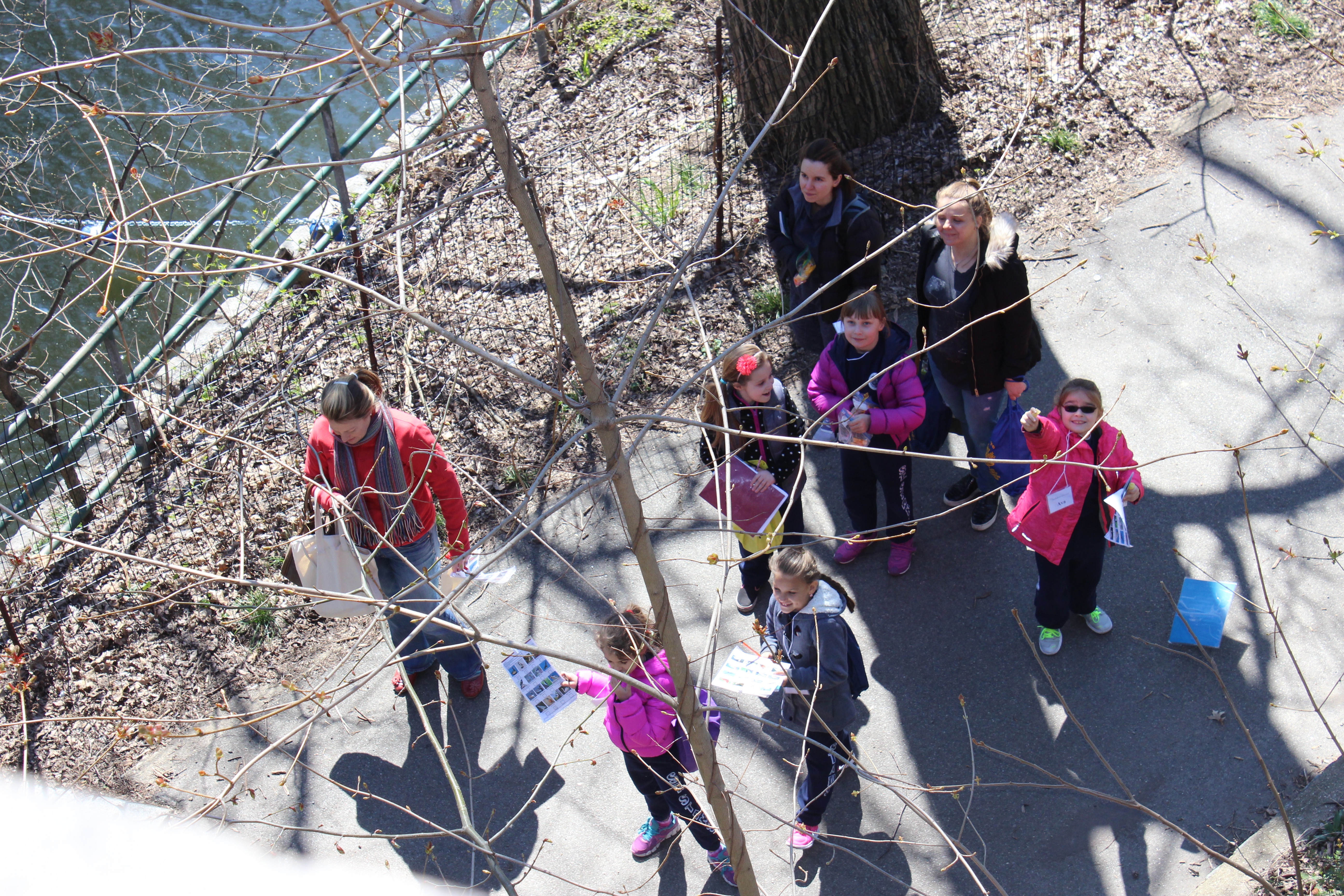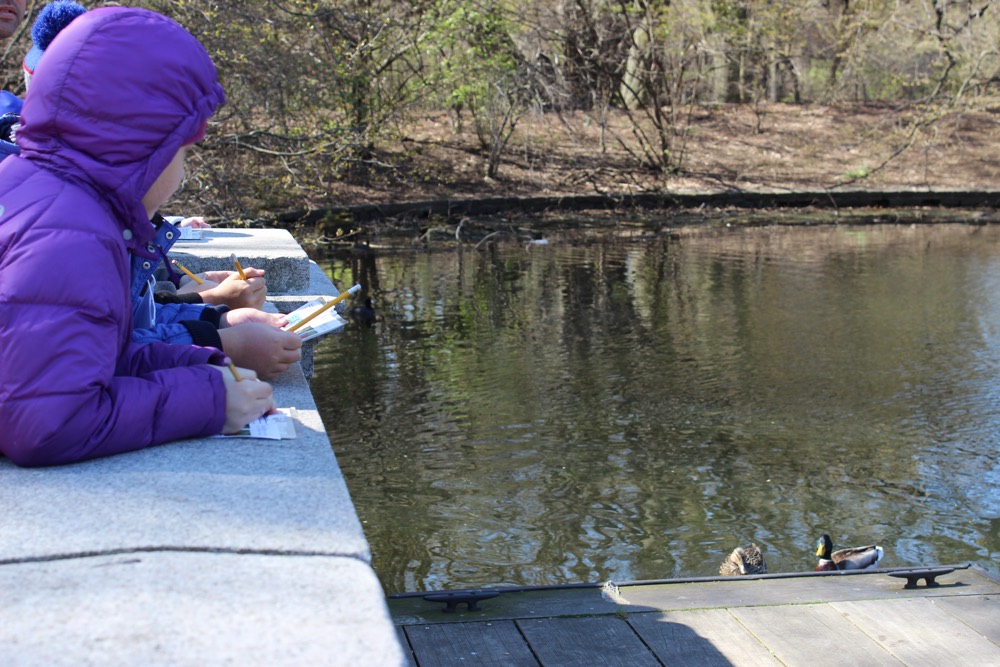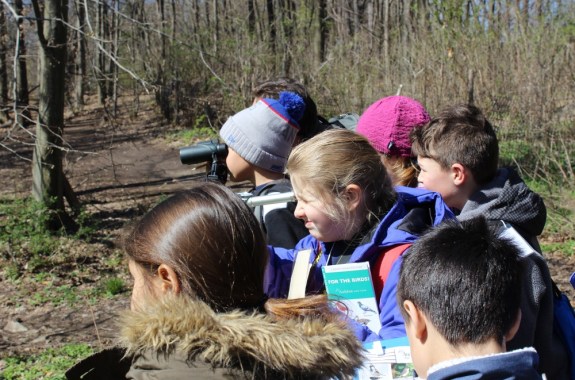Grade Level
3 - 5
minutes
1-3 hours
subject
Environmental Science
stem practices
Obtaining, Evaluating, and Communicating Information
Activity Type:
outdoor education, birding
Audubon New York’s For The Birds! program uses local birds to connect New York elementary school students to their neighborhood ecosystems. This story shares the experience of one class, but offers tips for any educator interested in sharing birding and environmental education with learners.
One morning this past April—one of the first warm, dry days of spring—a group of children eagerly gathered at an entrance to Prospect Park in Brooklyn, New York. They were about to embark on a bird walk with several birder-educators from Audubon New York, who were handing out the day’s supplies: laminated identification guides, along with clipboards and data sheets for recording sightings of the region’s most common birds, such as northern cardinals, American coots, rock pigeons, blue jays, and mallard ducks. Several kids were already on the lookout, pointing to an American robin perched in a nearby tree.
The educators divided up the students and reviewed field marks with them, then led their groups in different directions in search of all-things-feathered. As the kids detected sounds and movements coming from the trees, bushes, and lakes around Prospect Park, they tallied the number of common avian sightings on their data sheet.

The students—second and third graders from St. Stanislaus Kostka Academy in Greenpoint, Brooklyn—had recently completed an eight-week program called “For the Birds!,” offered by Audubon New York for 2nd-4th grade classrooms at various locations throughout New York State. As part of the program, Audubon staff and volunteers visit participating classrooms once a week, guiding students through hands-on lessons about a variety of bird-related topics, including adaptations, habitat, migration, and field identification. Students then get to apply their knowledge on a birding trip around a local park, as well as during a day spent planting native plants and installing bird boxes as a means to improve bird habitat.
For the Birds! is aligned to the Common Core State Standards and is split evenly between indoor and outdoor activities. At the end of each lesson, students do ample journaling, responding to prompts with written replies and illustrations, which program staff can use to assess whether students have mastered the concepts presented.
“The journaling piece is essential,” says Rich Santangelo, For the Birds!’ Education Program Manager. “Kids who are good at drawing, but whose writing maybe isn’t there yet, get to feel proficient at something,” he says. “It separates writing ability from content skills.”

After nearly 18 years, For the Birds! has put considerable thought into crafting an experience that encourages students to become invested in their local ecosystem. Because the program is spaced over several weeks, it gives students an opportunity to observe seasonal changes in bird species and habitats, allowing them to make stronger connections between the concepts they discuss in class and the patterns they witness outdoors.
For the Birds! has also incorporated new technology: Staff use the eBird website before birding walks to get a sneak peek of the bird species their students are likely to see on their days outside. That way, the educators can brush up on fun facts and field marks in advance.

After just 15 minutes walking through Prospect Park, it was clear the program had turned several kids into budding birders.
“What kind of bird is that?” one student shouted, pointing down to the water at a black bird bobbing on the surface of a lake. Tom VanDuyne, the group’s guide, reminded students that the bird could be found in their guides. “Okay, what kind of bird is that, boys and girls? American…”
“Coot!” shouted several students simultaneously.
The excitement continued as the students surveyed the remainder of the lake, taking in a pair of mallard ducks.
Here was an opportunity to reinforce the field marks students had studied the week, and VanDuyne quickly prompted, “Okay, which one’s the male—green head or brown head?”
Without skipping a beat, the whole group replied, “green head!”
The group concluded that the male and female mallards were likely a mating pair and peered along the banks for evidence of a shared nest. They didn’t find one, though they did spot a cardinal and several robins.
A quick reconvening at the end of the day revealed the group’s finds: 19 avian species, including several migratory birds (plus three kinds of turtle, squirrels, chipmunks, and a variety of mushrooms). All in all, it was a good day’s work for any flock of novice birders.
Meet the Writer
About Ariel Zych
@arieloquentAriel Zych was Science Friday’s director of audience. She is a former teacher and scientist who spends her free time making food, watching arthropods, and being outside.
